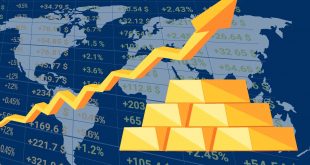The Non-Farm Payrolls report has been the dominant market for the past week. Nonfarm Payrolls in the US rose by 315,000 in August, this reading followed July’s increase of 526,000 (revised from 528,000) and came in slightly better than the market expectation of 300,000. The Unemployment Rate rose to 3.7% from 3.5%. The annual wage inflation, as measured by the Average Hourly Earnings, stayed unchanged at 5.2%, compared to the market expectation of 5.3%. Finally, the Labor Force Participation Rate improved to 62.4% from 62.1% in July.
On the other side of the ocean, The annualized Eurozone Harmonised Index of Consumer Prices (HICP) rose by 9.1% in August vs. July’s 8.9%. The core figures jumped to 4.3% YoY in August compared to 4.1% expectations and 4.0% recorded in July.
On a monthly basis, the old continent’s HICP accelerated to 0.5% in August vs. 1.1% expectations and 0.1% previous. The core HICP jumped 0.5% this month against 0.4% expected and -0.2% in July.
The Eurozone figures are reported a day after Germany’s annual inflation for August, which rose 8.8% and matched estimates following an 8.5% rise reported in July.
Wall Street
US stocks ended the week’s trading lower on Friday, as early gains were erased from a jobs report that showed a tightening labour market may have begun to recede in the face of concerns about the European gas crisis.
Wall Street began trading on Friday sharply higher after the US jobs report for August showed that employers hired more workers than expected, but the rise in the unemployment rate to 3.7 percent limited fears that the Federal Reserve will hike rates are exaggerated to reduce high inflation rates.
However, the gains faded after Gazprom, which is state-controlled in Russia and has a monopoly on exports of its gas to Europe via the pipeline that was due to resume operation on Saturday, said it could safely resume deliveries only after a leak was fixed. Oil was discovered in a vital turbine, and a new time frame was not given.
According to preliminary data, the Standard & Poor’s 500 index lost up to 41.23 points or 1.06 percent, to close at 3,925.62, while the Nasdaq Composite Index lost 154.12 points, or 1.31 percent, to 1,1631.01. The Dow Jones Industrial Average was not better; it also fell 327.23 points, or 1.03 percent, to 31,329.19 points.
The markets will be closed next Monday due to the Labor Day holiday.
Oil
Oil prices rose on Friday amid expectations that OPEC+ will discuss production cuts at its meeting on Sept. 5. However, concerns about COVID-19 restrictions in China and a weak global economy cast a shadow over the market.
Brent crude futures rose 66 cents to $93.02 a barrel, while US West Texas Intermediate crude futures rose 26 cents to $86.87 a barrel.
Both benchmarks fell three percent to their lowest levels in two weeks in the previous session. Brent recorded a weekly decline of 7.9 percent, while West Texas Intermediate crude fell 6.7 percent.
A weekly chart shows that US crude futures surpassed last week’s high and have since fallen to close below that level. This is a sign of a downward trend.
The OPEC+, which includes the Organization of the Petroleum Exporting Countries (OPEC) and its allies led by Russia, is scheduled to meet on Sept. 5 against the backdrop of an expected decline in demand, although Saudi Arabia says that supplies remain limited.
Three sources from OPEC+, according to Reuters, said the organization will likely keep its oil production quotas steady in October at Monday’s meeting. However, sources do not rule out production cuts to support prices falling from very high levels this year.
OPEC + this week revised its market forecast for this year and now expects demand to fall short of supplies by 400,000 barrels per day, downgrading to a previous forecast of 500,000. OPEC + expects a deficit in the oil market in 2023 of 300,000 barrels per day.
Meanwhile, Iran said it had sent a response “based on” US proposals to revive Tehran’s 2015 nuclear deal with world powers. However, the United States gave a less positive assessment.
On Friday, G7 finance ministers agreed to cap Russian oil prices but revealed few new details about the plan to reduce revenue funding Moscow’s war in Ukraine while keeping oil flowing to avoid price hikes.
Investors remain concerned about the impact of the new COVID-19 restrictions in China. On Thursday, the Chinese city of Chengdu ordered a shutdown that harmed manufacturers such as Volvo.
The Kremlin said on Friday that Russia would stop selling oil to countries that impose price ceilings on Russia’s energy resources, which Moscow said would lead to a major destabilization of the global oil market.
“Companies that impose a price cap will not be among the recipients of Russian oil,” Kremlin spokesman Dmitry Peskov told reporters on a conference call, backing comments made by Russian Deputy Prime Minister Alexander Novak on Thursday.
Forex
The dollar index hit a 20-year high on Thursday. It reached a 24-year peak against the interest rate-sensitive Japanese yen after US data showed the economy was solid and resilient, giving the US central bank more room for a sharp interest rate hike to curb hyperinflation.
The dollar strengthened after a government report showed that the number of Americans who filed for unemployment benefits fell further in the past week, consistent with strong labor demand.
The report also showed that layoffs decreased in August despite a sharp interest rate hike that increases the risk of a recession.
The dollar index, which measures the performance of the US currency against a basket of six currencies, rose 0.873 percent to 109.81 by 1445 GMT, its highest level since June 2002.
The euro fell 1.24 percent and below the level of parity with the dollar to 0.9931 dollars, while the sterling pound reached a new low in two and a half years, recording 1.1522 dollars, and the percentage of decline in the latest trading was about 0.86 percent. The dollar, which is considered a safe haven, was also supported by aversion to risk assets.
The Japanese yen fell as much as 140.225 yen against the dollar, its lowest level since 1998. The dollar rose in the last trading 0.71 percent to 139.94 yen.
The risk-sensitive Australian and New Zealand dollars also saw a sell-off in safe-haven assets and reached their lowest levels since July.
The Australian dollar fell 0.77 percent to 0.67905 and the New Zealand dollar fell 0.78 percent to $0.6072.
The cryptocurrency Bitcoin, which is affected by the appetite for risk, fell below 20 thousand dollars.
 Noor Trends News, Technical Analysis, Educational Tools and Recommendations
Noor Trends News, Technical Analysis, Educational Tools and Recommendations





